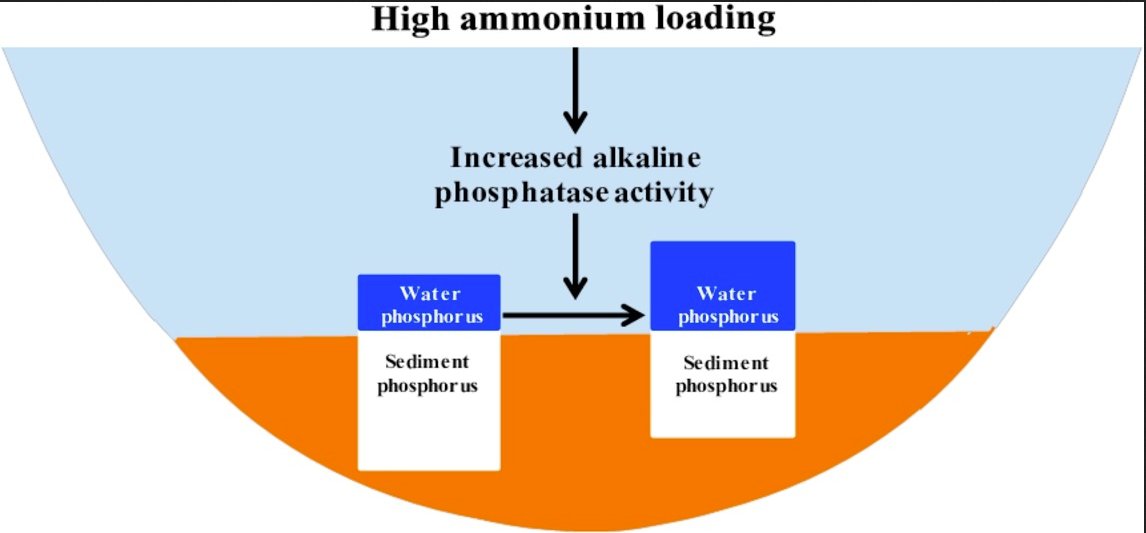High ammonium loading can increase alkaline phosphatase activity and promote sediment phosphorus release: A two-month mesocosm experiment
New publication by Shuo Nan Maa, Hai Jun Wang, Hong Zhu Wang, Yan Lia, Miao Liu, Xiao Min Liang, Qing Yu, Erik Jeppesen, Martin Søndergaard.

Abstract:
In aquatic ecosystems, ammonium is one of the dominant substances in the effluent discharge from wastewater treatment plants and its impact has been widely explored as it is thought, in its toxic form (NH3), to cause stress on organisms. Little is, however, known about its potential effect on the release of phosphorus (P) from the sediment. In a two-month mesocosm (150 L) experiment, we tested if high loading of ammonium promotes sediment P release and investigated the dominant underlying mechanisms. A gradient of five target ammonium loading levels was used by adding NH4Cl fertilizer: no addition/control (N0), 3 (N1), 5 (N2), 10 (N3), and 21 (N4) mg NH4Cl L−1 (NH4Cl expressed as nitrogen). We found that: 1) significant sediment P release for N3 and N4 but minor release or retention for N0, N1, and N2 were detected both by the total phosphorus concentration (TP) in the overlying water and in situ measurements of diffusive gradients in thin-films (DGT) at the sediment-water interface; 2) overall, TP correlated significantly and positively with total nitrogen (TN) concentrations in the water. Further correlation and path analyses suggested that stimulated alkaline phosphatase activity (APA) was likely the dominant mechanisms behind the ammonium-induced sediment P release and decreased dissolved oxygen (DO) levels (an approximate reduction from 9.2 to 6.6 mg O2 L−1) was likely a contributing factor, particularly in the beginning of the experiment.
Water Research, Bind 145, 15.11.2018, s. 388-397. https://doi.org/10.1016/j.watres.2018.08.043
